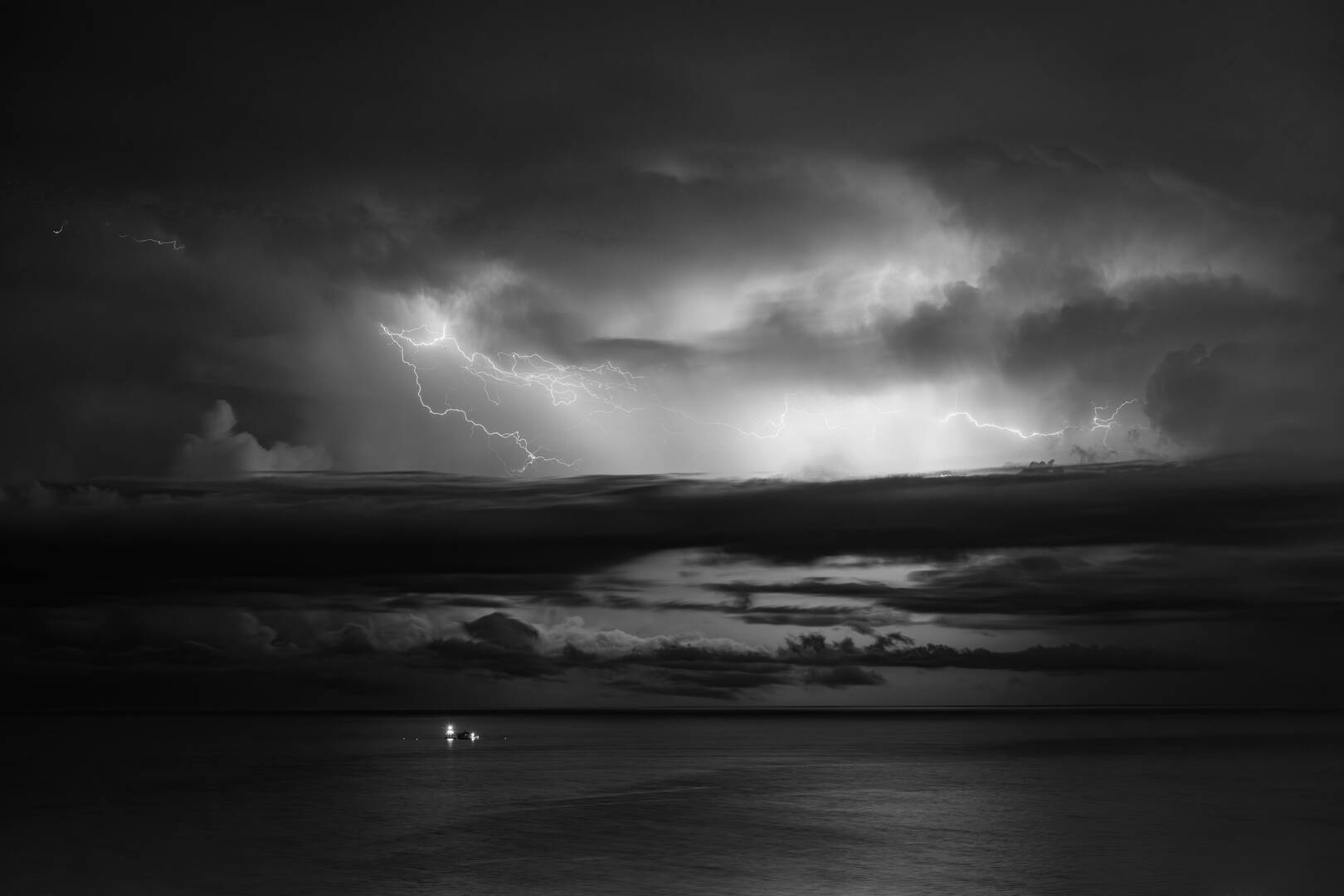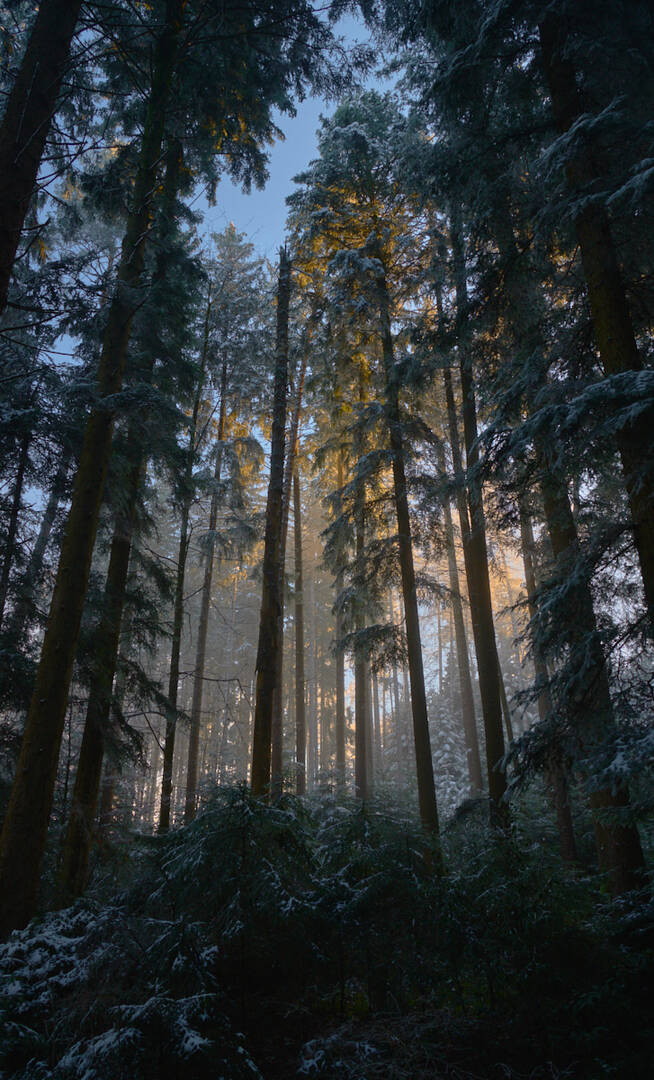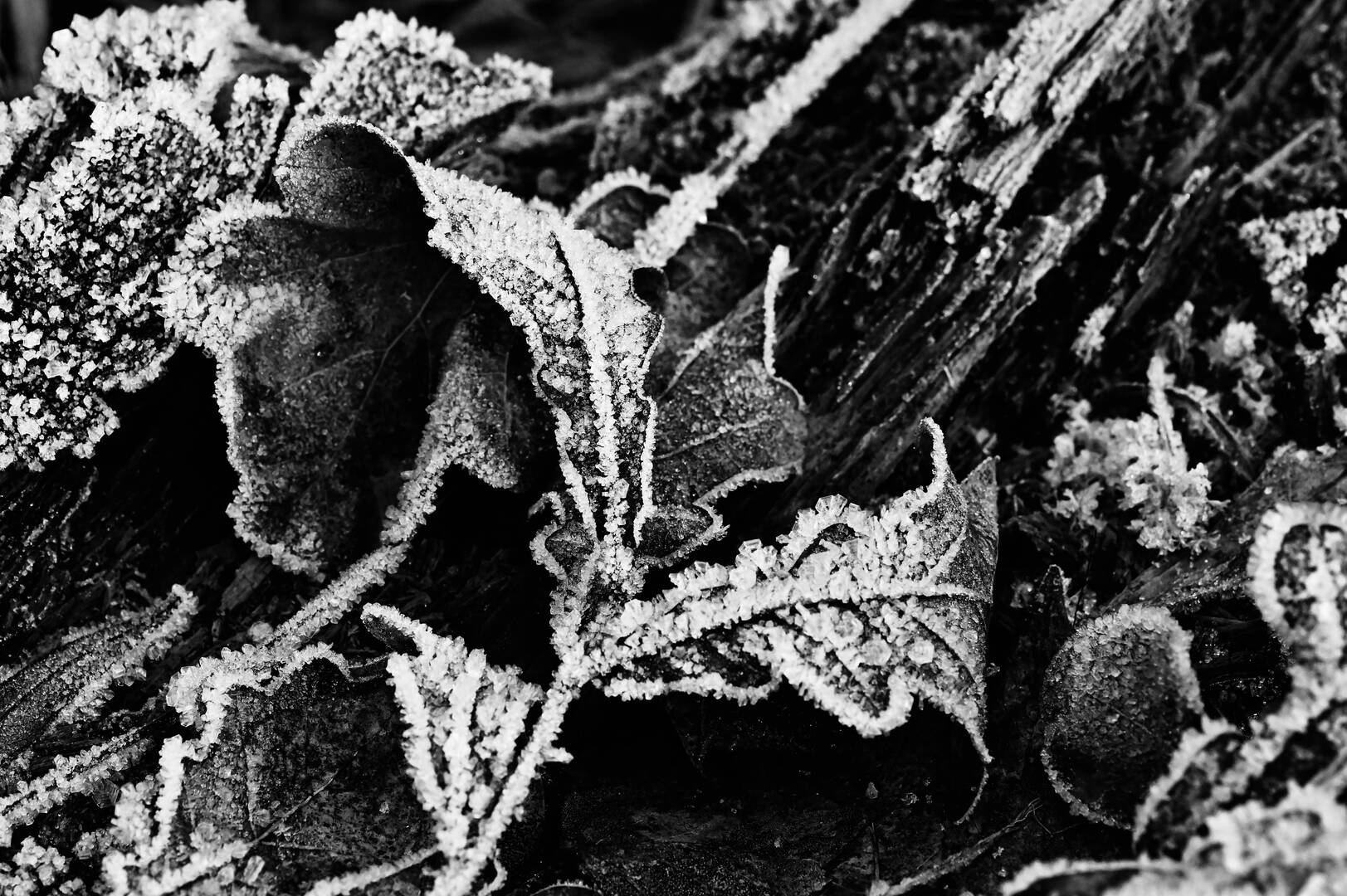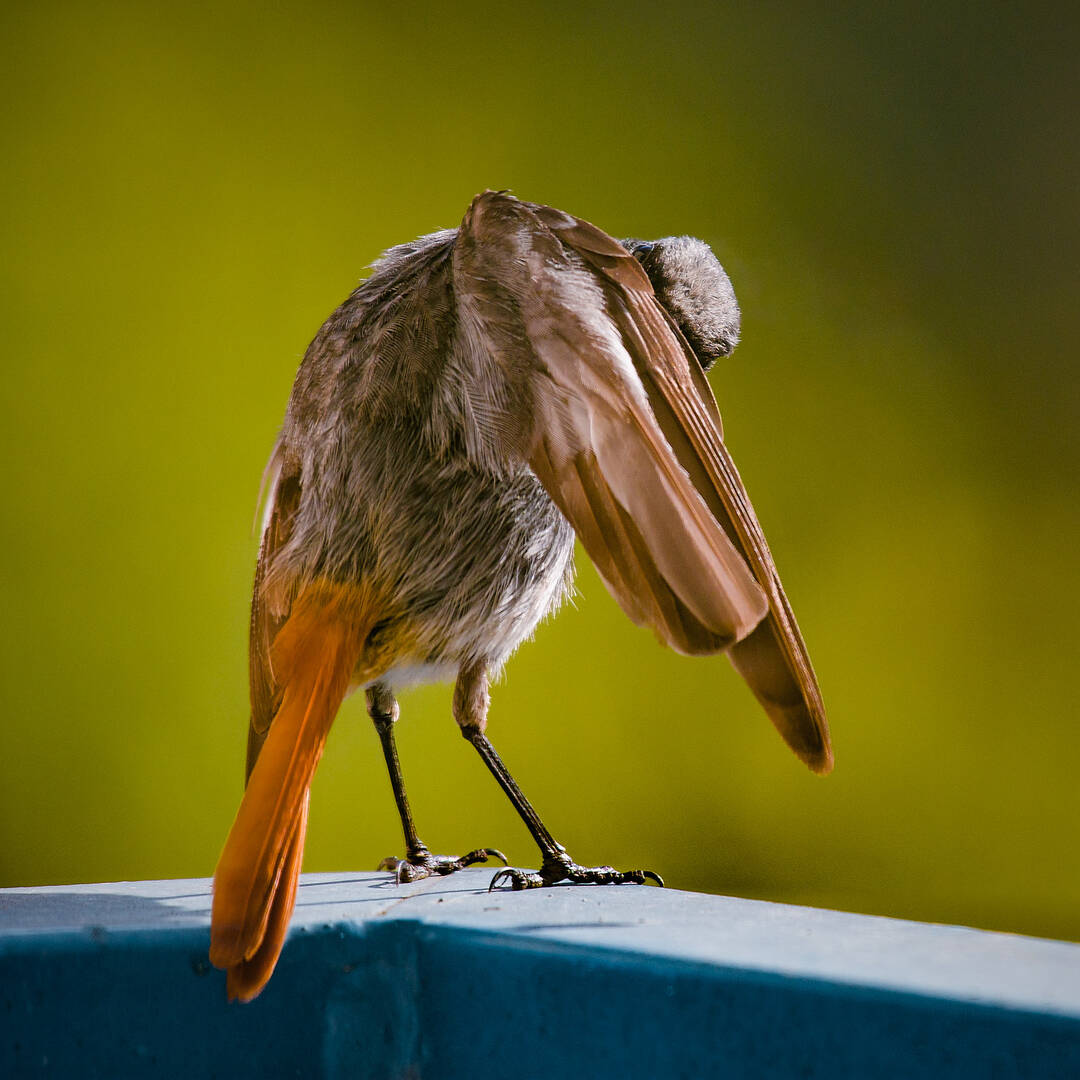Some old photography “rules” are hard to kill. That was apparent to me yesterday afternoon when I went out cross-country skiing (rather foolishly carrying a full camera backpack, my Z9, and my tripod along). The rule in question? Not shooting into the sun! As I took the photo below, a woman walked up to me and asked what I could possibly be photographing. She wasn’t a photographer, but she certainly knew the age-old rule about never shooting into the sun. But with modern lens coatings, I find that shooting into the sun can lead to lovely silhouettes and moody photos. So to kick off this week’s photography news, I leave you with the photo below.

Recent Announcements
- Leica SL3-S: At first glance, the biggest difference compared to the current SL3 is the price, which is $1,700 less! But what else is different? The most significant technical change under the hood is the BSI CMOS sensor with a resolution of 24.6MP (compared to 60.3MP in the SL3). This results in twice the maximum ISO (up to 200,000) and twice the continuous shooting speed (30 FPS). Unfortunately, this speed can only be achieved with the electronic shutter – keep in mind that the sensor is not stacked – and 12-bit RAW. If you prefer 14-bit RAW, you’ll have to make do with a rather sluggish 5 FPS, which is quite underwhelming for the price in today’s market. As for video, the SL3-S can internally record at up to 4K/30fps in 10-bit RAW at the full width of the sensor. From a design perspective, the SL3-S has a more stealthy look than the original SL3; the bold white LEICA logo has been replaced with a subtle black one. Its journalistic nature is further emphasized by the ability to activate C2PA content authentication. The price is $5,295.
- DJI Flip: Another DJI drone with a weight under 250g. This weight limit is crucial for anyone who wants to avoid the hassles and regulations associated with heavier categories. Despite its lightweight design, this drone features a solid camera mounted on a three-axis gimbal and equipped with a 48MP 1/1.3″ CMOS sensor. It can record video at up to 4K at 100 FPS. For stills, it supports both JPG and DNG (RAW) formats. Video enthusiasts will appreciate the 10-bit D-Log M color mode. Its innovative propeller guards (handy when flying near people) keep the drone in the air for up to 31 minutes. Price-wise, the Flip hovers between the entry-level Neo and the sub-250g flagship, the DJI Mini 4 Pro. Depending on accessories, the price ranges from $439 to $779.
- TTArtisan AF 23mm f/1.8: A 210g APS-C lens (35mm full-frame equivalent) designed for cameras with Fuji X, Sony E, and Nikon Z mounts. Its all-metal body contains 11 elements in 9 groups (1 high-index, 2 extra-low dispersion). Autofocus is powered by an STM motor with a minimum focusing distance of 0.3m. Firmware updates are handled via a USB-C port built into the rear lens cap. The price is $127.
- 7Artisans 18mm f/5.6: This fully manual, 146g lens is an ultra-wide option covering full frame. It fits cameras with Leica L, Sony E, or Nikon Z mounts. The lens measures just 25mm in length (plus the mount). The all-metal barrel has a 49mm filter thread, and the optical design includes 7 elements in 5 groups (2 aspherical, 1 low dispersion). The fixed aperture design offers a single f/5.6 setting – an unusual limitation that keeps the price to a mere $89.
- Voigtlander NOKTON 28mm f/1.5 Aspherical: This fast, full-frame lens isn’t exactly new. Its Leica M-mount version debuted in December 2023, followed by the Sony E-mount variant a year later. The latest addition now brings compatibility with Nikon Z-mount cameras. While the lens is manual focus, it still communicates with the camera, enabling EXIF data transfer, IBIS support, and focusing aids like focus peaking. Compared to the M-mount version, the minimum focusing distance has significantly decreased (from 0.5m to 0.28m), the filter thread size has increased (from 43mm to 52mm), and the weight has gone up slightly (from 330g to 360g). However, the key optical design of 10 elements in 8 groups remains unchanged. The price is expected to be around $750.
The Rumor Mill
Laowa Probe zoom expected: A 2x macro lens with a long nose and a wide range
Over the years, Laowa has established itself as a producer of unique and original macro lenses. For example, the 15mm f/4 super wide angle macro lens, or the 24mm T8 2x Probe macro lens, the front of which can be submerged underwater. Now it seems that Laowa is preparing to release a combination of both lenses – with some added extras – sometime in April-June 2025.
The lens is expected to offer three options for shooting angles: direct, periscope, and 35 degree tilt. (It’s not yet clear whether these angles will be covered by a single lens or a trio, like in the current version.) Rumors suggest that the waterproof front of the lens, along with its 2x macro capability, will be inherited from the existing Probe lens. But perhaps the most intriguing feature of the upcoming lens will be its variable focal length, expected to range from 15mm to 35mm.
Via Photo Rumors
Panasonic Lumix S1R II: The poor man’s Leica SL3?
According to L-Rumors, it seems that the successor to the five-year-old Lumix S1R could be announced sometime before the CP+ show (before February 27th). For now, almost nothing is known about the camera – although it’s expected to share the same 60.3MP sensor as the Leica SL3. Interestingly, Panasonic has officially registered three new camera models in Asia. And since Panasonic cameras often come in pairs, we could also see a lower-resolution sibling, the Lumix S1H II, as early as the first half of 2025.
Via L-Rumors
Good Deals and New Sales
Nikon has put many of their cameras and lenses on sale for January (mostly, but not all, mirrorless gear). Below are the cameras and lenses that you can currently find at B&H at better-than-usual prices.
Camera and lens kits
- Nikon Z6 III Mirrorless Camera with 24-70mm f/4 S was $3,097, now $2,597
- Nikon Z8 Mirrorless Camera with 24-120mm f/4 was $5,097, now $4,297
Cameras
- Nikon Z9 was $5,497, now $4,997
- Nikon Z8 was $3,997, now $3,397
- Nikon Z7 II was $2,997, now $1,997
- Nikon Z6 II was $1,997, now $1,497
- Nikon Z6 III was $2,497, now $2,197
- Nikon Z5 was $1,397, now $997
- Nikon Zf was $1,997, now $1,797
Lenses
- Nikon Z 800mm f/6.3 VR S was $6,497, now $5,497
- Nikon AF-S 600mm f/4E FL ED VR was $12,297, now $8,697
- Nikon Z 600mm f/4 TC VR S was $15,497, now $13,997
- Nikon Z 600mm f/6.3 VR S was $4,797, now $3,797
- Nikon AF-S 500mm f/5.6E PF ED VR was $3,597, now $3,297
- Nikon Z 400mm f/2.8 TC VR S was $13,997, now $12,997
- Nikon Z 400mm f/4.5 VR S was $3,247, now $2,797
- Nikon Z 100-400mm f/4.5-5.6 VR S was $2,697, now $2,297
- Nikon Z MC 105mm f/2.8 VR S Macro was $1,047, now $847
- Nikon AF-S 105mm f/1.4E ED was $2,097, now $1,897
- Nikon Z 70-200mm f/2.8 VR S was $2,697, now $2,197
- Nikon Z 70-180mm f/2.8 was $1,247, now $1,047
- Nikon Z 28-400mm f/4-8 VR was $1,297, now $997
- Nikon Z 24-70mm f/2.8 S was $2,397, now $1,997
- Nikon Z 28-75mm f/2.8 was $1,197, now $897
- Nikon Z 35mm f/1.8 S was $847, now $697
- Nikon Z 14-24mm f/2.8 S was $2,497, now $1,997
- Nikon Z 14-30mm f/4 S was $1,347, now $1,147
- Nikon Z 17-28mm f/2.8 was $1,197, now $997
Other Pages of Interest
The cones in our eyes are adapted to perceive the world around them in wavelengths of light from 380 nm to 760 nm. However, the light-sensing cells in camera sensors have no such limitation – with modification, they can be made to capture images in the infrared or UV light range. And what do such photos or videos look like? Let yourself be inspired by the winners of the Kolari competition – Life in another light.
The Andromeda Galaxy is a mere 2.5 million lightyears away from Earth. In cosmic terms, that’s about the distance from your house to the nearest grocery store. It’s no surprise, then, that its angular size on the night sky is six times the apparent diameter of the full Moon (though much dimmer). The Hubble Telescope has been used to capture the Andromeda Galaxy through a stitch of more than 600 images. It took NASA 10 years to capture and assemble this stunning mosaic, which contains over 200 million stars. Now you can see it for yourself, and, if you like, download it in resolutions up to 42,208 x 9,870 pixels. On my slow Internet connection, downloading this 203MB image took almost as long as capturing it – but it was worth every second.
Perhaps the opposite of the Hubble Space Telescope (HST) is the Nikon 14.3mm f/4 Fisheye. This one-off, highly specialized lens is designed for larger IMAX 360-degree 70mm film cameras, though can be adapted for 35mm SLRs. But be prepared – behind the massive front element, which resembles the eye of a deep-sea squid, your camera (and probably your head) won’t be very visible. You can see the lens in person at the Leica Store in Lisse, the Netherlands, or read more details on their website. Though if you want to buy it, you’ll need a spare $250,000.
Photo Theme Challenge, Week #85
Last week’s theme was close to home, and you can see the results in this thread. Thank you to everyone for your submissions! This week’s theme is macro, and you can submit your results in this thread by Saturday, January 25, 2024!
Week #84 Results
Let’s check out some of the shots we received for the “close to home” theme, starting with Tom Pazol’s photo:

A very moody and ominous image taken from the roof of his home!
Next, we have DL84’s photo of a beautiful forest nearby:

Great work, and a place I’d certainly love to live!
Next is a close-up photo from Andrew Gusew showing that macro and intimate landscape photos can be taken almost anywhere:

Finally, we have a great photo of a Black Redstart by PRG Lagarde. It may break some of the classic “rules” of bird photography but is nevertheless effective because of the interesting story being shown in the photo!

Thanks everyone for submitting their photos in the challenge, and we hope to see more next week in the macro theme.
Leica SL3 sensor pixel bining option should be on every single high resolution full frame camera instead of usless crop mode they offer, i do not undernstand why it is not, is that so difficult technicaly?
Libor – Exceptional photo. The Z9 + z24-120 is a marvelous amalgam and one that I will be taking to gardur Iceland to photograph winter geothermal vents in two weeks. I will have to think about the backlighting of said subject – thanks to you!!
Thank you very much, Ralph. Enjoy your photo trip to winter Iceland! I wish you beautiful light, from whatever angle it comes. And you’re right, hot steam or geysers are just begging for backlighting.
Cool photo – I like it (and I also like shooting into the sun or other light sources). Did you process this in colour, or is it monochrome with a tint applied (split toning/colour grading or similar)?
Thank you bg. I manually set the camera to highlights (slight underexposure). In post, I cropped, adjusted the histogram (levels) on the left and right and that’s it. I left the colours as they were.
My shutter speed was too fast :D
… thanks for the feature Libor :D
Hi Libor. Some old rules don’t apply anymore indeed. About shooting in the sun, there is also the fact that Z8/Z9 can shoot at 1/32000 s, and most modern full frame camera are able to shot at 1/8000 s since at least ten years. BTW even the Canon EOS 5D Mark II of 2008 “only” maxed out at 1/4000 s.
That’s true, 1/32000s can be very useful in these lighting conditions. Especially if you were shooting wide open with a fast lens. But that was not my case. I was comfortably below 1/1000s, which even my old Praktica MTL5 could do. Still, I had a couple of ND filters with me just in case. This was to make it easier for me to ski down the hill.
In 1984 I had the pleasure of gazing upon a 6mm Nikkor in the window of a small camera shop under the Spring Deer Restaurant in Kowloon. I don’t recall the price but it was probably a few thousand dollars and seemed outrageous at the time. If only! Coulda woulda shoulda.
What a pity. It could have been a great investment. On the other hand, I haven’t even seen this gem.
Breathtaking backlit photo, Libor!
Thank you very much, Randy.
+1
Great capture, Libor!